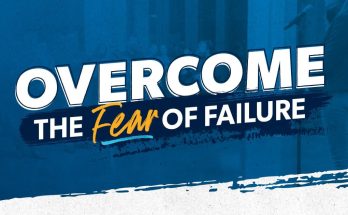Creating inclusive learning environments is no longer a peripheral concern—it’s a central imperative for educators, institutions, and organizations committed to meaningful development. Inclusion goes beyond access; it’s about cultivating spaces where every learner feels valued, respected, and empowered to participate fully. In a world that is increasingly diverse and interconnected, the ability to foster inclusive learning is not just a moral responsibility—it’s a strategic advantage. It enables deeper engagement, richer collaboration, and more innovative thinking across all levels of education and professional development.
At the heart of inclusion is the recognition that learners bring varied experiences, perspectives, and needs to the table. These differences—whether cultural, linguistic, cognitive, physical, or emotional—shape how individuals interact with content, peers, and instructors. A truly inclusive environment acknowledges these differences and responds with flexibility, empathy, and intentional design. For example, a classroom that offers multiple ways to access material—visual, auditory, and kinesthetic—ensures that students with different learning styles can engage meaningfully. In a corporate training setting, providing options for asynchronous participation or language support can make learning more accessible to global teams.
Creating inclusive environments also requires a shift in mindset. It’s not enough to avoid exclusion; inclusion must be actively pursued. This means challenging assumptions, examining biases, and rethinking traditional norms. Educators and facilitators must be willing to ask difficult questions about whose voices are heard, whose needs are met, and whose experiences are reflected in the curriculum. A business school that incorporates case studies from diverse industries and regions is not just expanding content—it’s validating the lived realities of a broader range of learners. Inclusion, in this sense, becomes a lens through which all aspects of learning are viewed and refined.
Language plays a powerful role in shaping inclusive environments. The words we use can either invite participation or reinforce barriers. Inclusive language is respectful, clear, and free from stereotypes. It acknowledges identity without reducing individuals to labels. In learning environments, this means being mindful of how instructions are phrased, how feedback is delivered, and how discussions are facilitated. A facilitator who encourages open-ended questions and affirms diverse viewpoints creates a space where learners feel safe to contribute. This psychological safety is essential for authentic engagement and deeper learning.
Assessment practices must also evolve to support inclusion. Traditional assessments often favor specific types of intelligence or expression, inadvertently disadvantaging learners who think or communicate differently. Inclusive assessment recognizes that understanding can be demonstrated in multiple ways. A student who struggles with timed exams may excel in project-based work or oral presentations. A professional who finds written reports challenging might thrive in collaborative problem-solving sessions. By offering varied formats and allowing for choice, educators can better capture the full range of learner capabilities and foster a sense of ownership and agency.
Technology offers both opportunities and challenges in creating inclusive learning environments. On one hand, digital tools can personalize learning, provide real-time feedback, and connect learners across geographies. On the other hand, they can exacerbate inequities if access, training, or design are not considered. An inclusive approach to educational technology involves user-friendly interfaces, compatibility with assistive devices, and content that reflects diverse perspectives. It also means providing support for learners who may be unfamiliar with digital platforms, ensuring that technology enhances rather than hinders participation.
The role of leadership in fostering inclusion cannot be overstated. Whether in schools, universities, or corporate settings, leaders set the tone for what is valued and prioritized. When inclusion is embedded in strategic goals, resource allocation, and professional development, it becomes part of the organizational culture. A company that invests in inclusive training programs and measures their impact is signaling that learning is not just about performance—it’s about belonging. Similarly, an educational institution that engages students in curriculum design is demonstrating that inclusion is not a top-down directive but a collaborative process.
Creating inclusive learning environments also involves listening—deeply and consistently. Feedback from learners provides invaluable insights into what’s working, what’s missing, and what needs to change. This feedback must be solicited with care and acted upon with integrity. When learners see that their voices lead to tangible improvements, they feel respected and motivated. This sense of agency transforms passive participation into active engagement and builds trust between learners and educators.
Ultimately, inclusion is not a checklist—it’s a commitment. It’s a way of thinking, designing, and interacting that places human dignity at the center of learning. It requires humility, creativity, and persistence. It asks educators to see learners not as problems to be solved but as partners in a shared journey. And it challenges institutions to move beyond rhetoric and into action. When learning environments are truly inclusive, they become spaces of possibility—where every learner can explore, contribute, and grow. In a world that demands collaboration, innovation, and empathy, these environments are not just beneficial—they are essential.



